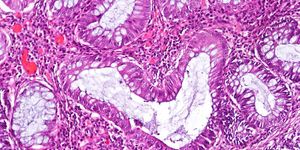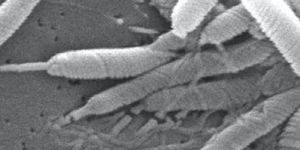Research Shows The Cause of Childhood Leukemia
Babies and young children need to be kept safe by the adults in their lives, however keeping them in a germ-free environment might not be the best idea. Children, especially during the toddler years, are active and as any parent will tell you, will often put just about anything in their mouths (or up their nose, or in their ears.)
While this is distressing, a little dirt might be a good thing. A new analysis from the Institute of Cancer Research in London suggests that a form of childhood leukemia could be caused, in part, by infections later in life, but only in children who were not exposed to germs when younger.
Professor Mel Greaves from The Institute collected evidence from research over the last 30 years. Some of what was analyzed were studies Greaves was part of, and the analysis of that research shows that a two-step process in child health is responsible for acute lymphoblastic leukemia (ALL.)
The first part is a genetic mutation that occurs in utero and predisposes children to leukemia. It’s not a done deal, however, since only 1% of children born with this genetic defect will actually develop the disease. The second step is what’s so significant about Greaves analysis. ALL can be triggered later in life by any one of several common childhood infections. In children who spent their infancy and toddler years in very clean homes, with little contact with other children, ALL is much more common. Greaves posits that the immune system malfunctions when there is no early exposure to germs and coupled with the genetic predisposition are the cause of leukemia.
Greaves’ work was a direct challenge to previous research that pointed towards environmental causes, chief among them ionizing radiation and chemicals created for industrial uses. His analysis showed no significant evidence for these causes. His theory, dubbed, “delayed infection theory” suggests that in childhood, the immune system can be “primed” to avoid developing leukemia. While ALL is treatable with chemotherapy in more than 90% of cases, the side effects of treatment are serious and lifelong.
Work in lab animals that had an active leukemia-initiating gene showed that when the mice were moved from a germ-free lab environment to one with germs commonly found in daily life, the mice developed ALL. In a press release, Professor Greaves stated, “This body of research is a culmination of decades of work, and at last provides a credible explanation for how the major type of childhood leukemia develops. The research strongly suggests that ALL has a clear biological cause, and is triggered by a variety of infections in predisposed children whose immune systems have not been properly primed. It also busts some persistent myths about the causes of leukemia, such as the damaging but unsubstantiated claims that the disease is commonly caused by exposure to electro-magnetic waves or pollution. I hope this research will have a real impact on the lives of children. The most important implication is that most cases of childhood leukemia are likely to be preventable.”
He also stressed two important caveats, that the risk of childhood cancer is influenced heavily by inherited genes and chance and that his findings apply specifically to acute lymphoblastic leukemia. Other childhood cancers, like acute myeloid leukemia (AML), may have a different mechanism. Check out the video to hear more about the research.
Sources: The Institute of Cancer Research, Miami Herald, Nature Reviews Cancer









